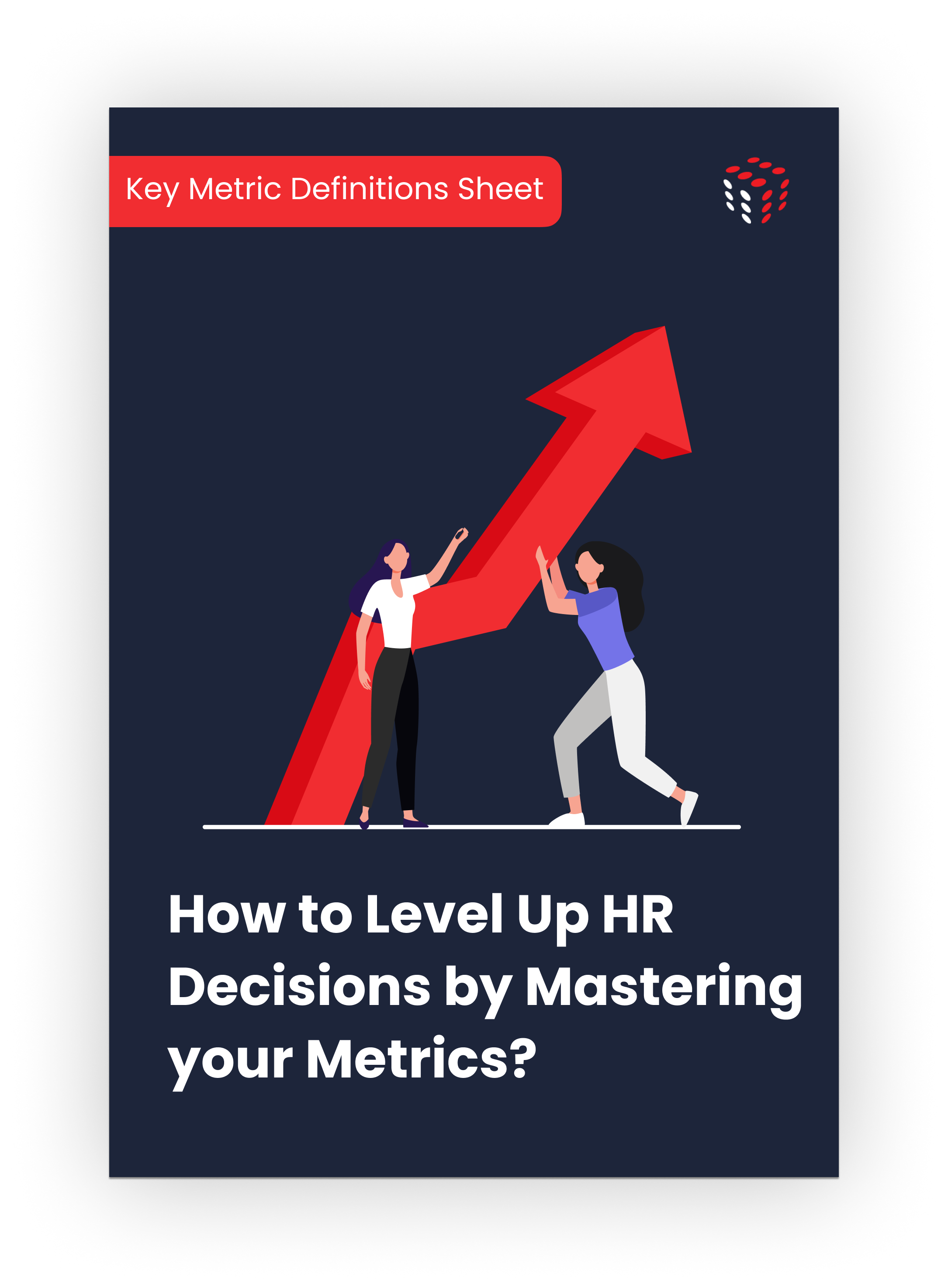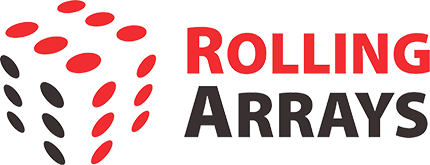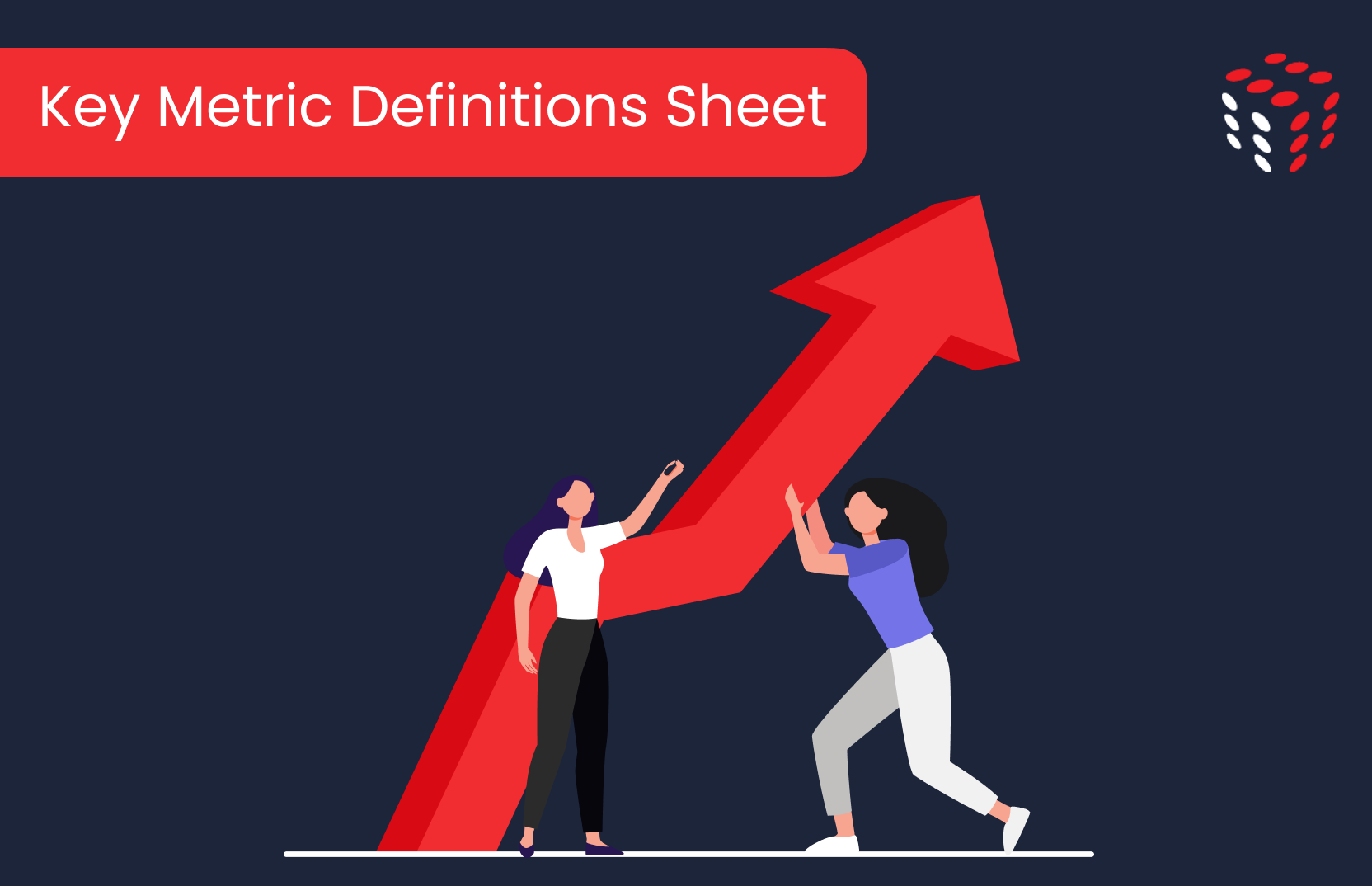
Whitepaper
The Ultimate Guide to SuccessFactors Analytics: Leveraging Data for Strategic HR Decision-Making
Key Metric Definitions Sheet Included


Table of Contents
RESOURCES > WHITEPAPER > The Ultimate Guide to SuccessFactors Analytics: Leveraging Data for Strategic HR Decision-Making
People analytics is transforming how HR leaders make data-driven decisions about their workforce. By leveraging insights about employees, organisations can drive better talent outcomes that support business objectives.
This guide explores the powerful analytics capabilities within SAP SuccessFactors, one of the most widely used HR management systems globally. We’ll cover:
- Monitoring workforce trends through foundational metrics.
- Gaining insights across the employee lifecycle – from pre-hire to exit.
- Leveraging predictive analytics to model future scenarios.
- Optimising HR operations through process analytics.
- Building the business case with analytics ROI.
- Developing analytical acumen and accelerating maturity.
With the right combination of SuccessFactors’ embedded analytics, machine learning add-ons, and external benchmarking data, HR can become a strategic advisor on data-driven workforce planning.
This guide demonstrates how workforce analytics enables more informed talent investments, mitigated risks, and competitive advantage. Let’s unlock the total value of your organisation’s HR data. The future of insightful HR is here!
Overview of Analytics Capabilities
This guide will explore the analytics capabilities available within SuccessFactors to elevate data-driven HR decision-making. Key topics include:
- Monitoring Workforce Trends – SuccessFactors provides foundational reporting on workforce composition, turnover, performance, and other metrics to understand the current state. Pre-built dashboards and visualisations make tracking KPIs simple.
- Analytics Across the Employee Lifecycle – Digging deeper, SuccessFactors enables insights into the employee experience from pre-hire to exit. Recruiting, retention, performance and other talent analytics inform strategic priorities
- Predictive Analytics – Leveraging machine learning algorithms, SuccessFactors offers embedded and third-party predictive capabilities to forecast scenarios like attrition risk, performance, hiring needs and more. This enables proactive planning.
- HR Operational Analytics – SuccessFactors provides visibility into HR process efficiency, transactions, compliance and service delivery metrics besides talent insights. This drives continuous improvement of HR operations.
- The ROI of Analytics – Quantifying the business impact of data-driven programs is critical for analytics adoption. SuccessFactors allows tying talent outcomes to financial returns to build executive buy-in.
- Enabling Technologies – Artificial intelligence, machine learning, and other innovations are expanding the possibilities of workforce analytics. SuccessFactors offers leading capabilities to put emerging technologies to work for your organisation.
- Building Analytical Acumen – Developing the skills to interpret and apply data analytics effectively is crucial for success. SuccessFactors’ embedded analytics lower barriers to getting all HR professionals proficient with data.
- Accelerating Maturity – Best practices for change management, stakeholder engagement,ment, and technology adoption enable the launch of high-impact analytics programs. SuccessFactors partners provide expertise to guide the journey.
Monitoring Workforce Trends
SuccessFactors provides a suite of pre-built dashboards and reports to gain visibility into foundational workforce metrics. HR leaders can leverage these to:
- Track headcount, turnover, diversity metrics and other KPIs over time.
- Segment data by key workforce dimensions like location, department, manager, and more.
- Benchmark workforce statistics against industry standards.
- Monitor trends through interactive charts, graphs and data visualizations.
With the right basics, HR teams can spot outliers, compare performance, and identify improvement areas. For example, high turnover limited to one geography can prompt further analysis of issues unique to that area.
Key foundational workforce insights include:
- Headcount analytics: Monitor the number of employees by location, department, manager and other filters over time. Spot under/over-staffing issues by function or business unit.
- Turnover metrics: Analyze voluntary and involuntary turnover rates across the organisation. Dig deeper into drivers through exit interview data and performance records.
- Diversity statistics: Track and report on diversity metrics (gender, ethnicity, age, etc.) across different employee segments. Set goals to improve representation.
- Hiring analytics: Understand hiring volume, source of hire, time-to-fill and other recruiting KPIs. Identify bottlenecks causing delays.
- Compensation benchmarking: Compare employee pay to market data. Adjust to remain competitive. Assess fairness through pay equity analysis.
- Performance trends: Track employee performance ratings by department, manager, and job function. Identify needs for training interventions.
- Learning analytics: Monitor course completion rates, satisfaction with L&D programs, and associated performance impact. Improve development initiatives.
Analytics Across the Employee Lifecycle
While foundational insights provide a snapshot of the current workforce, talent analytics digs deeper into data across the employee lifecycle. SuccessFactors enables HR teams to uncover insights from pre-hire to exit, including:
Recruiting Analytics
- Identify which sources consistently provide quality hires using recruitment source tracking. Redirect recruiting efforts and spending accordingly.
- Analyse time-to-fill for open positions by location and department. Identify and address bottlenecks.
- Gain visibility into the candidate experience through satisfaction survey data. Improve the hiring process.
Onboarding Analytics
- Track new hire ramp-up time to productivity in the role. Use benchmarks to set expectations.
- Correlate engagement survey scores of new hires with onboarding touchpoints like training completion.
- Gain insights around day 90 retention rates to evaluate long-term fit.
Performance Analytics
- Compare performance rating trends across business units, functions, and manager levels.
- Analyse performance by high-potential talent segments. Ensure growth opportunities.
- Identify patterns in ratings data that indicate bias—correct issues through calibration and training.
Retention & Lifecycle Analytics
- Develop a predictive model for flight risk based on tenure, performance, engagement and other data.
- Identify triggers impacting retention, like promotion rates, compensation trends, and manager quality.
- Conduct stay interviews with valued talent. Feed insights back to managers to improve engagement.
SuccessFactors’ embedded analytics provide a wealth of employee lifecycle data. Additional insights can come through machine learning add-ons like Visier’s Talent Acquisition capability, which lets you build predictive models to improve the quality of hire.
Across the lifecycle stages, talent analytics transforms disparate employee data into strategic insights that create competitive advantage through better talent decisions.
Predictive Analytics
While most workforce analytics focus on understanding past trends, predictive analytics uses data to model likely future scenarios. This enables HR to evolve from reactive to proactive talent planning.
SuccessFactors offers embedded machine learning capabilities and integrations with predictive analytics partners like Visier, providing insights such as:
- Projected Attrition – Identify employees most likely to leave based on analysis of past attrition drivers. Proactively retain.
- Performance Forecasting – Predict future performance by role or team based on historical trends—and target development opportunities.
- Career Path Modeling – Map employee skills to projected growth roles. Recommend development plans and promotions.
- Workforce Planning – Model headcount, costs, and talent needs under projected business scenarios. Inform hiring strategy.
- Risk Analysis – Simulate the financial impact of losing key talent. Build a business case for investments to mitigate risk.
Predictive analytics models analyse large volumes of HR data to find correlations between employee attributes, programs, and outcomes. Scenario modelling then simulates “what-if” assumptions to forecast directional results.
For example, a projected attrition model may identify that employees with low ratings, no recent promotions, and more than three years of tenure have a 60% chance of leaving. The prediction would lead to proactive retention initiatives for similar at-risk profiles.
Powerful integrations like Visier’s Planview modeling further enrich SuccessFactors’ capabilities. Planview lets HR simulate the impact of initiatives like improving manager quality on future performance. This enables data-driven planning.
The business impact of predictive analytics includes optimised talent investments, mitigated risks, and data-driven agility in a changing environment. As AI and machine learning improve predictive capabilities, HR gains a strategic advantage through probabilistic planning.

Level Up HR Decisions
Master Your Metrics with This Key Definitions Sheet
The Key Benefits:
- Demystify HR Data
- Benchmark Your Performance
- Data-Driven Decisions
- Optimise HR Efforts
HR Operational Analytics
While strategic insights enable big-picture workforce planning, SuccessFactors also provides valuable analytics on HR operational metrics. These include:
- HR Process Efficiency – Dashboards to monitor service metrics like query resolution rates, case closure times and backlogs. Identify areas for improvement..
- Case Management – Real-time tracking of employee case volumes, types and status. Dig into trends to understand pain points.
- Transaction Analytics – Metrics on volume and cycle times for critical transactions like new hire onboarding, promotions, and transfers. Streamline processes
- Audit Tracking – Reports on HR policy and compliance violations. Ensure adherence to standards.
- HR Automation Tracking – Analyze usage and impact metrics for chatbots, workflows, and self-service tools. Identify adoption gaps.
- HR Ticketing Analytics – Reporting on trends from query tickets enables finding quick wins. Frequently asked questions can signal needed communications.
- Org Management Analytics – Insights into the span of control, role distribution and changes can inform organisational design decisions.
The business impact of operational analytics includes:
- Improved Efficiency – Optimizing processes through cycle time reductions, backlog management and automation.
- Enhanced Compliance – Auditing transactions and policy adherence reduce organisational risk.
- Cost Savings – Automating high-volume activities drives significant overhead reduction. AI chatbots alone can yield 20-30% in savings.
- Better Employee Experience – Lower case resolution times and HR process friction improve satisfaction.
While often overlooked, ensuring smooth and efficient HR operations creates a foundation for building strategic capabilities. SuccessFactors provides the insights needed to improve continuously.
Enabling Technologies
Emerging technologies like artificial intelligence (AI), machine learning (ML), and natural language processing (NLP) are expanding the possibilities of workforce analytics.
SuccessFactors offers leading capabilities to put these innovations to work for your organisation.
Key examples include:
- AI Algorithms – SuccessFactors analytics leverages AI and ML algorithms to detect patterns and generate insights. This provides the foundation for predictive modelling.
- Conversational Interfaces – NLP powers conversational interactions, enabling users to ask questions about data in plain language and receive automated answers. This makes analytics more user-friendly.
- Automated Insights – AI capabilities automatically surface relevant insights, trends, correlations, and outliers from workforce data. This augments human analysis with machine intelligence.
- Forecasting Models – Sophisticated ML algorithms enable robust modelling of future scenarios for strategic planning. This powers projected attrition, performance prediction, and talent supply forecasting capabilities.
- Chatbots – AI-powered bots handle common HR service requests, providing 24/7 assistance. Integrating bots with analytics helps continually improve the employee experience.
- Recommendation Engines – Systems can automatically prescribe targeted actions like learning to individuals based on their attributes and past workforce data analysis.
SuccessFactors delivers consumer-grade user experiences with enterprise-scale data science capabilities by leveraging these innovations. The AI-powered future of people analytics is already here with SuccessFactors.
The ROI of Analytics
Demonstrating return on investment is vital for workforce analytics adoption. Here are proven examples from named SuccessFactors customers:
- Reduced Turnover – Heathrow Airport leveraged SuccessFactors predictive analytics to minimise frontline staff turnover by 15%, saving £4 million annually.
- Improved Productivity – Cisco optimised organisational design and learning initiatives driven by SuccessFactors workforce insights to gain $150 million in productivity.
- HR Cost Savings – Medtronic automated HR case management solutions using SuccessFactors AI to cut HR shared services costs by 20%.
- Enhanced Performance – Hilton used SuccessFactors analytics to identify and close skills gaps, increasing employee performance scores by 8% across thousands of properties.
- Informed Compensation – Schneider Electric adjusted compensation using SuccessFactors market benchmarking data, lowering regrettable attrition of top talent by 22%.
These examples prove SuccessFactors provides the end-to-end analytics capabilities for customers to demonstrate substantial ROI across crucial workforce metrics. Ongoing impact validation maintains executive support over time
Key Takeaways
- SuccessFactors provides a suite of embedded analytics encompassing foundational workforce insights, talent analytics, predictive capabilities, and operational metrics.
- Complementary third-party solutions like Visier allow for enhancing SuccessFactors with external benchmarks, advanced modelling, and predictive analytics.
- Substantial ROI can be achieved across objectives like reducing turnover, increasing productivity, lowering HR costs, improving performance, and optimising compensation.
- Emerging technologies like AI, machine learning, and automation amplify the analytics value SuccessFactors offers.
- Developing analytical skills, partnering strategically, and prioritising business-critical metrics accelerates analytics maturity.
- People analytics enables HR to become a strategic, data-driven partner in workforce planning when enabled by solutions like SuccessFactors.
Conclusion
The potential for workforce analytics to elevate the strategic impact of HR is tremendous. As explored in this guide, SuccessFactors provides foundational reporting, talent insights, predictive analytics, operational metrics, and AI capabilities to optimise the function.
While the embedded analytics are powerful, additional value can be realised through third-party predictive solutions and benchmarks like Visier. Combining external data science with SuccessFactors unlocks maximum insights.
For HR leaders beginning their analytics journey, the keys are prioritising business-critical talent questions, demonstrating quick ROI, and leveraging partners to accelerate maturity. With the proper data foundation and capabilities, HR becomes a trusted analytics advisor in strategic workforce planning.
The future of work demands data-driven agility and decision-making. SuccessFactors offers a robust platform for organisations to build analytical competencies and achieve competitive advantage through talent intelligence. The time to harness the power of data-driven HR is now.
About Rolling Arrays
Rolling Arrays has been driving SAP SuccessFactors-led HR Transformation since 2009. The company specialises in SF consulting, implementation, and support and also builds applications to enhance the utility of the SuccessFactors platform. It is committed to designing systems that help its customers to attract, develop and retain talented individuals. In 2021, Rolling Arrays was recognized as one of the top 75 fastest-growing companies in Singapore by The Straits Times & Statista.




Share with your network
Get updates in your inbox